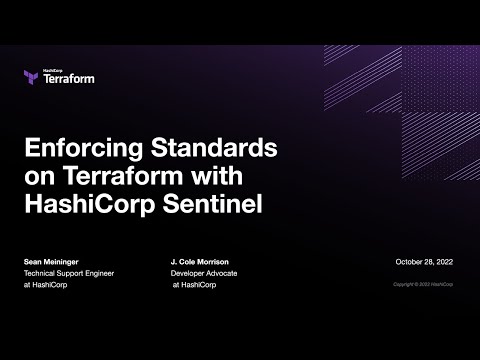Description:
Dive into a comprehensive tutorial on enforcing standards and best practices across Terraform code using HashiCorp's policy-as-code tool, Sentinel. Learn everything needed to get started with Sentinel, from writing policies from scratch to implementing vetted policies from the Terraform Registry. Explore the main components of Sentinel, understand policy as code concepts, and follow along with a detailed demo on creating and implementing Sentinel policies. Discover how to use Sentinel with Terraform Cloud Workspaces, handle resources with calculated values, and leverage existing policies for immediate production use. Gain insights into writing effective rules, using predicate rules, and integrating Sentinel into your infrastructure automation workflow.

Enforcing Standards on Terraform with HashiCorp Sentinel
Add to list
#Programming
#Cloud Computing
#Infrastructure as Code (IaC)
#Terraform
#Business
#Corporate Governance
#Compliance
#Software Development
#Code Quality
#Computer Science
#DevOps
#Infrastructure as Code
#Policy-as-Code